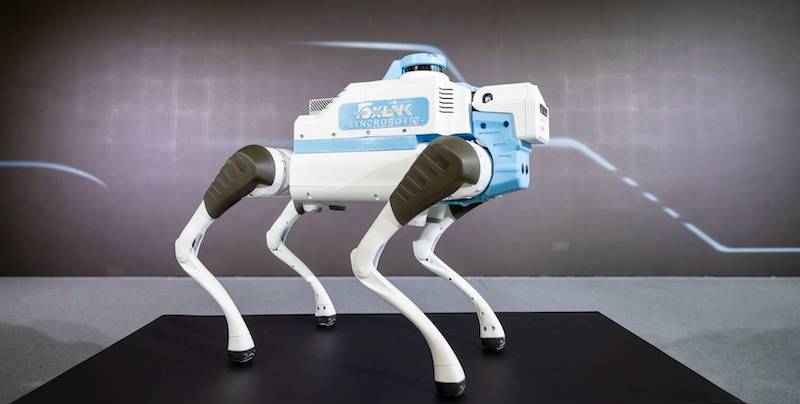1. Introduction & Overview
What is Robot State Sync?

Robot State Sync refers to the process of synchronizing the internal state of one or more robots with a centralized control system, cloud backend, or peer robots in real time.
- It ensures consistency of operational data (e.g., location, battery level, task progress).
- Acts as a single source of truth for robotic systems, enabling reliable coordination in distributed or multi-robot environments.
History or Background
- Early robotics (1990s–2000s) lacked real-time state synchronization. Robots operated in isolation.
- With the rise of IoT, cloud robotics, and swarm robotics, syncing robot states became critical.
- Frameworks like ROS (Robot Operating System) introduced concepts like topics, publishers, and subscribers that inspired RobotOps-style orchestration.
Why is it Relevant in RobotOps?
RobotOps (DevOps for robotics) focuses on automation, monitoring, and lifecycle management of robots. Robot State Sync is vital because:
- Robots often operate in dynamic, distributed environments.
- Without sync, failures occur: task conflicts, navigation errors, or downtime.
- Enables continuous deployment (CI/CD) in robotics by ensuring the latest state is always known.
2. Core Concepts & Terminology
Key Terms
| Term | Definition | Example |
|---|---|---|
| Robot State | The current data representation of a robot (sensors, actuators, tasks). | {"battery": 78%, "task": "delivery", "location": "Zone-3"} |
| Sync Interval | Frequency of updating state across systems. | Every 200ms |
| State Conflict | When two systems report different states for the same robot. | Robot says “idle”, cloud says “working” |
| Eventual Consistency | State converges over time even if temporarily inconsistent. | Multi-robot fleets |
How It Fits Into the RobotOps Lifecycle
- Plan: Define states (telemetry, tasks).
- Build: Integrate state APIs.
- Deploy: Deploy sync agents on robots.
- Operate: Monitor & reconcile robot states in real time.
- Iterate: Improve sync mechanisms for performance.
3. Architecture & How It Works
Components
- Robot Agent – Runs locally on the robot, collects telemetry, pushes/pulls state.
- State Server – Centralized or distributed backend that maintains global state.
- Sync Protocol – MQTT, gRPC, or WebSockets for low-latency sync.
- Conflict Resolver – Decides which state wins during conflicts.
- Monitoring Dashboard – Observes sync health and metrics.
Internal Workflow
- Robot Agent collects state (sensors, task progress, environment data).
- State is published to State Server via a protocol.
- Server aggregates and validates states.
- Updates are broadcasted to cloud apps, CI/CD pipelines, or other robots.
Architecture Diagram (description)
- Robots (Agents) → send state → State Sync Server
- Server → updates → Cloud / CI/CD / Other Robots
- Monitoring tools plug into the server to visualize metrics.
Integration Points with CI/CD or Cloud Tools
- CI/CD Pipelines: Deploy updated control software → immediately test against robot state.
- Cloud: AWS RoboMaker, Azure Robotics, or GCP IoT for scaling state sync.
- Monitoring: Prometheus/Grafana integration for state metrics.
4. Installation & Getting Started
Basic Setup or Prerequisites
- Linux/Mac environment
- Docker or Kubernetes for running the state server
- ROS2 or custom agent SDK installed on robots
- MQTT broker (e.g., Mosquitto)
Hands-On: Beginner Setup
- Clone Repository (example SDK):
git clone https://github.com/robotops/state-sync.git
cd state-sync
2. Start State Sync Server (Dockerized):
docker-compose up -d
3. Configure Robot Agent:
robot_id: "robot_001"
server_url: "mqtt://localhost:1883"
sync_interval: 200ms4. Run Agent:
python agent.py --config robot.yaml5. Monitor State:
curl http://localhost:8080/state/robot_001
5. Real-World Use Cases
- Warehouse Robotics – Synchronizing positions of autonomous mobile robots (AMRs) to avoid collisions.
- Healthcare Robots – Sync patient delivery tasks across hospital wings.
- Agriculture Robots – Syncing drone fleets for crop spraying.
- Manufacturing – Robots updating production line status for predictive maintenance.
6. Benefits & Limitations
Benefits
- Real-time coordination across fleets.
- Enables cloud-native robotics with CI/CD integration.
- Improves fault tolerance (rollback to last known state).
- Scalable to thousands of robots.
Limitations
- High network dependency (latency issues).
- Conflict resolution complexity.
- Security risks if state data is intercepted.
7. Best Practices & Recommendations
- Security: Encrypt state data (TLS), enforce auth.
- Performance: Use event-driven sync instead of polling.
- Monitoring: Set up metrics on sync latency and conflicts.
- Automation: Auto-resolve common conflicts with predefined rules.
- Compliance: Ensure GDPR/HIPAA compliance if sensitive data is synced.
8. Comparison with Alternatives
| Approach | Pros | Cons | Best Use Case |
|---|---|---|---|
| Robot State Sync | Real-time, scalable, CI/CD ready | Requires infra, complex setup | Multi-robot fleets |
| Local State Logging | Simple, offline-friendly | No coordination | Single robot |
| Cloud-Only Telemetry | Centralized, easy analytics | High latency | Non-critical monitoring |
| Peer-to-Peer Sync | Decentralized, resilient | Hard to scale | Swarm robotics |
9. Conclusion
Robot State Sync is a cornerstone of RobotOps, enabling reliable orchestration, monitoring, and automation of robotic systems.
- It brings DevOps-like practices to robotics by ensuring state consistency across distributed fleets.
- Future trends: AI-driven conflict resolution, 5G-based ultra-low latency sync, blockchain for trust validation.
Next Steps
- Try open-source frameworks like ROS2 DDS State Sync.
- Explore cloud tools: AWS RoboMaker, Azure Robotics.
- Join communities:
- ROS Discourse
- RobotOps GitHub